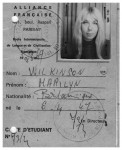Cité des Fusains: The Hidden Artist Studios of Montmartre
- SUBSCRIBE
- ALREADY SUBSCRIBED?
BECOME A BONJOUR PARIS MEMBER
Gain full access to our collection of over 5,000 articles and bring the City of Light into your life. Just 60 USD per year.
Find out why you should become a member here.
Sign in
Fill in your credentials below.
The Rue Tourlaque runs steeply downhill until it abruptly meets the walls of Montmartre Cemetery. Behind the gates of number 22 lies a complex of artists studios known as the Cité des Fusains (Charcoal City), which in the early 1900s was just as well known as the famous Bateau Lavoir.
Situated at place Émile-Goudeau, the Bateau Lavoir was a former ballroom and piano factory, later occupied as an artist squat in 1889. The 20 unheated ateliers shared a single source of water, so the building was inevitably dirty and on windy days it swayed and creaked like the washing boats on the Seine. Despite its rudimentary facilities, the Bateau Lavoir was home to innovative artists and writers such as Picasso, Modigliani, Juan Gris, André Salmon, Max Jacob, Matisse, Braque, Utrillo and Marie Laurencin.
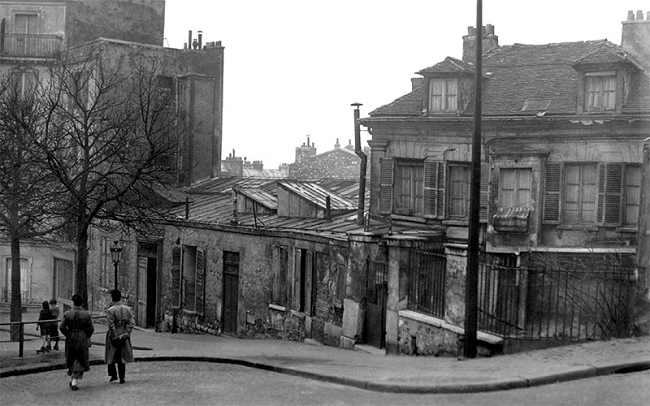
Le_Bateau-Lavoir. Photo Credit: Christies/Wikimedia Commons
Unlike the makeshift workshops in the Bateau Lavoir, the workshops of Les Fusains were purpose built. The original set of ateliers were constructed in 1900 on the Rue Steinlen on a disused plot of the Montmartre Cemetery but by 1920, the plot had expanded into the Rue Tourlaque.
Because of its location and atmospheric streets, untouched by Haussmann’s regeneration of Paris, Montmartre was a cheap place to live, and also an exciting place, filled with cabarets, bals musettes, and louche bars. The atmosphere— marked by cheap absinthe and licentious living — was an irresistible lure for bohemians and artists of every genre.
Within a short walk o Sacre Coeur, Picasso had a first studio in Rue Gabrielle. Vincent Van Gogh and his brother Theo had an apartment in the Rue Lepic near La Moulin de la Galette, immortalized by almost every artist who ever lived there. Toulouse Lautrec and Degas had studios in Montmartre and of course Renoir famously lived in the Rue Cortot (now the Musée de Montmartre), which housed at various times, Raoul Dufy, Suzanne Valadon and Maurice Utrillo.
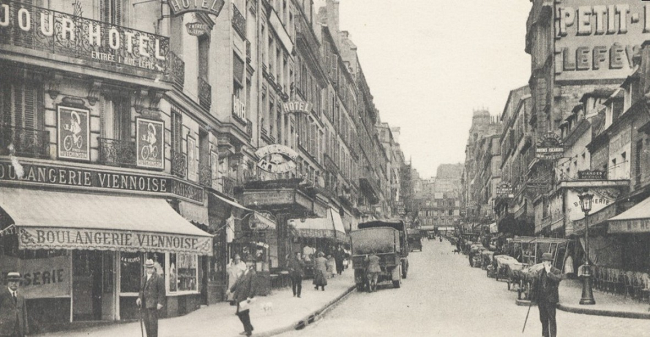
Rue Lepic in 1925, seen from Place Blanche. Photo Credit: Anonymous/Wikimedia Commons
Unlike Renoir’s 17th-century house, the oldest structure in Montmartre, the Cité des Fusains was constructed with recycled materials. After the Universal Exhibition in 1889, when the Eiffel Tower was first showcased, the old pavilions were dismantled and the materials reused: wooden frames, bricks and glass. Architect Robert Bourdeau oversaw the construction of lightweight, glass-roofed workshops, some three stories high.
The workshops were cheap to rent and immediately attracted artists, the most famous being André Derain in 1906, followed by Georges Joubin, Pierre Bonnard and Auguste Renoir. (Renoir painted his beautiful portrait of Berthe Morisot in his studio there.) Derain was especially interesting. He and Matisse were nicknamed “Les Fauves” (Wild Beasts) when they introduced a new art movement– they were exposed to virulent ridicule after showing their works at the Salon d’Automne in 1905.
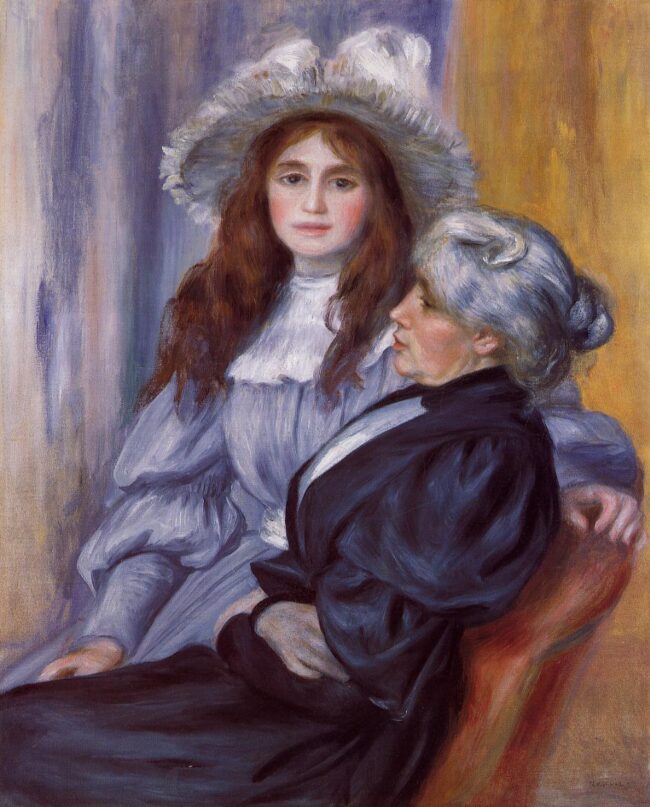
Portrait of Berthe Morisot and her daughter Julie Manet, by Pierre-Auguste Renoir, 1894. Public domain.
Matisse and Derain were great friends and Derain was hugely influenced by Matisse and his quest for an even greater freedom in expression. Matisse had returned to the south of France in 1905, not to St Tropez, but to the remote fishing village of Collioure. Matisse’s paintings were so completely innovative, the forms and colors so unfettered, that Matisse needed affirmation from other artists to validate his new style of painting.
Only Derain would make the journey south. The two worked together, side by side in the open air, for two months, Derain now painting as wildly as Matisse, both of them aware that they were breaking away from all accepted art forms that had gone before, including Impressionism. The same Impressionism that had shocked the art world before, was now shocked by them. Instead of caving after the debacle of the Salon d’Automne, Matisse doubled down, refusing to follow any path but his own and continued to paint regardless of public opinion. (Worse still, and far more wounding for Matisse, contemporary artists in Montmartre joined in the vilification and crudely daubed the walls of building, damning Matisse as “mad and dangerous.”)
Les Fauves in Les Fusains were certainly not having an easy ride with their “non-European, primitive art.”

Matisse’s innovative dance painting. State Hermitage Museum
In 1911, Pierre Bonnard rented a studio in Les Fusains and painted his sensuous appreciations of the female form. In such a small area, it was inevitable that the artists from Le Bateau Lavoir, Les Fusains, and those renting private studios would meet up and compare their paintings, gossip, drink and carouse. Montmartre was a village, and in the 1920s, Les Fusains became an oasis for even more diverse artists, sculptors and writers such as Paul Eluard.
Max Ernst — the German painter, sculptor, graphic artist and poet — moved in to Les Fusains for about 10 years from 1925 to 1935. Ernst was a prolific painter and a primary pioneer of the Dada movement and Surrealism in Europe along with Marcel Duchamp and, of course, Salvador Dali.

Les Fusains at 22, rue Tourlaque. Photo credit: Tangopaso / Wikimedia commons
The Spanish artist Joan Miro had two successive workshops, starting in 1927. When Miro moved from Spain to Paris in 1924, he joined the Surrealist group and collaborated with Max Ernst on ballet designs for Sergei Diaghilev. Though Miro had been ridiculed in Barcelona, he was championed by his fellow countryman Picasso in Paris. Miro, a comparative newcomer, was in awe of the established Picasso and his enormous talent. Later when invited to Picasso’s studio, Miro, a self-confessed idealist, was disappointed at the level of commercialism involved in Picasso’s prodigious output, and he said that, “visiting Picasso’s studio is like visiting a ballerina with a number of lovers…” Nevertheless, the two remained friends and Picasso continued pushing dealers and collectors in Miro’s direction.
The expansion of the Cité ded Fusains included not only more workshops, but also winding paths planted with trees and sculptures in a charming, village-like setting.
André Masson soon followed. A follower of the Surrealist and Cubist movement, Masson became an enthusiast of automatic drawing and experimented with altered states of consciousness with artists such as Michel Leiris, Miro, Georges Bataille, Jean Dubuffet and George Malkine, all close neighbors. His paintings of combat, massacres and eroticism added to his political stance that clashed with that of André Breton, resulted in Masson being expelled from the Surrealist movement in 1929.
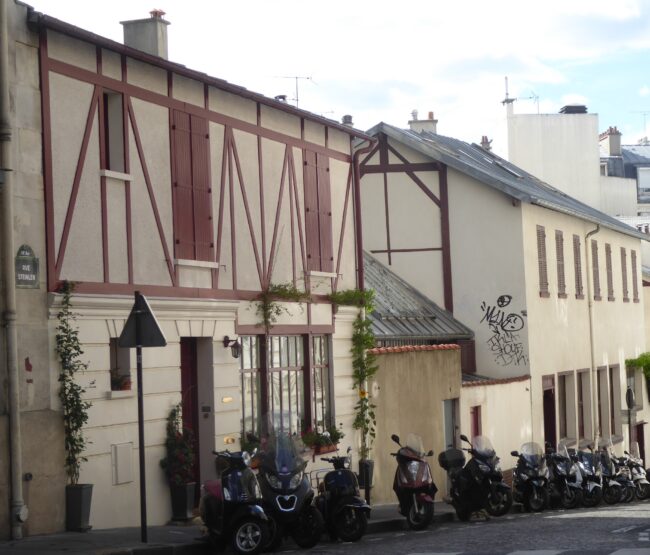
Les Fusains, Rue Steinlen. Photo credit: VVVCFFrance / Wikimedia Commons
Magritte and Dali were also seen working in Les Fusains. Another Spaniard and an important Surrealist, Dali was renowned for his technical skill and craftsmanship, but he became more renowned still for the bizarre images in his work and his physical appearance. Dali’s best-known work, completed in 1931 was “The Persistence of Memory.” Dali’s work influenced not just the Surrealists but later still pop art and contemporary artists such as Damien Hurst and Jeff Koons. Dali certainly had his fair share of critics; those politically disgusted with his support of the Franco regime, and others who found his posturing preposterous, decrying his eccentric public behavior (he strolled around with his pet ocelot, Babou). This attracted more attention than his astonishing artwork.
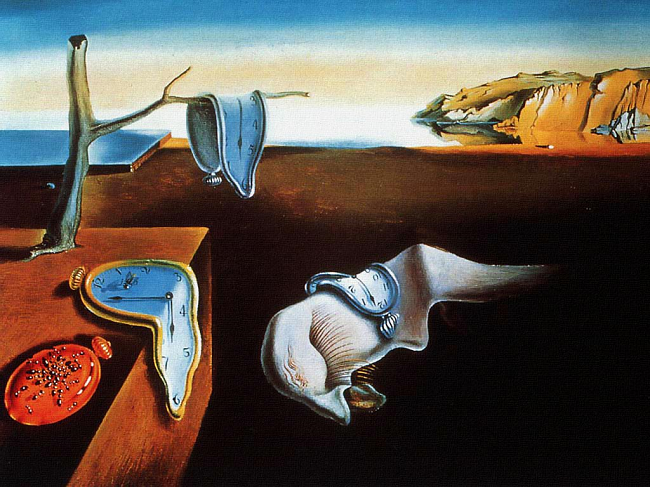
“The Persistence of Memory” by Salvador Dali. Photo Credit: zeqnlibya/Flickr
In 1966, the Cité des Fusains was classified as a historical monument. But unfortunately time has moved on from the heady days when poor artists could rent a workshop for 450 -700 francs a month.
Very few artists could afford to live now in Les Fusains – although thankfully, some artists still grimly hang on. Many of the old workshops have been bought by the wealthy and can cost upwards of a million euros.
Les Fusains has become exclusive.
Until earlier this year, Les Fusains was freely open to the public, to wander the winding streets of this unique village within a village, redolent of a bygone age of beloved artists, and imbued with the inimitable history of this exceptional Montmartre venue. After complaints of the theft of a statue, a coded lock was installed on entrance gates.
A sign of progress that the progressive artists of the 1900s would surely have hated.
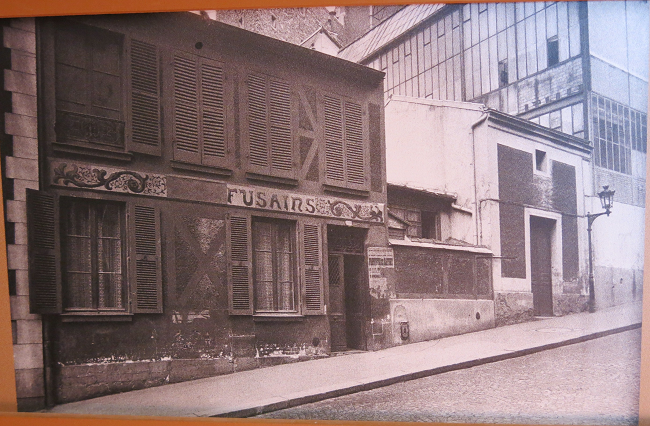
Cité des Fusains in 1939. Photo Credit: Wikimedia Commons
Lead photo credit : Montmartre, Paris. Photo Credit: Nezar Kadhem/Flickr
More in Art, Art studios, Ateliers, Le Bateau Lavoire, Montmartre, Paris art

